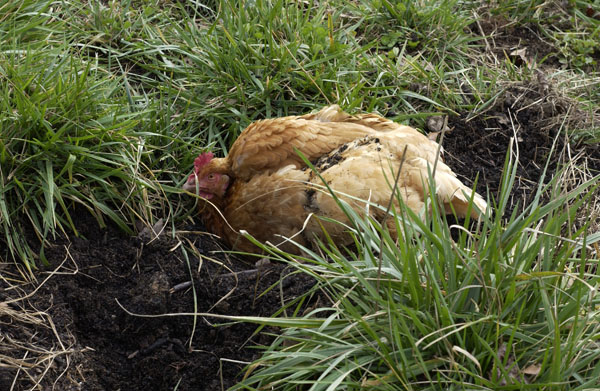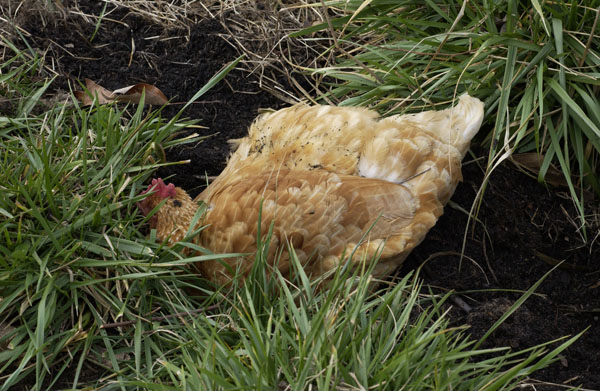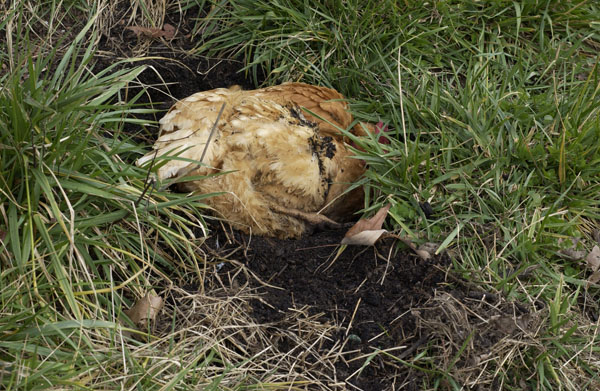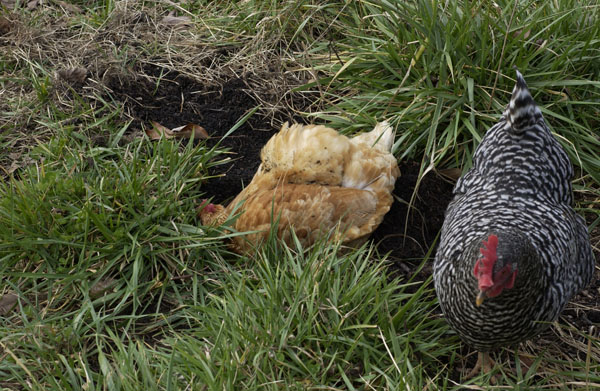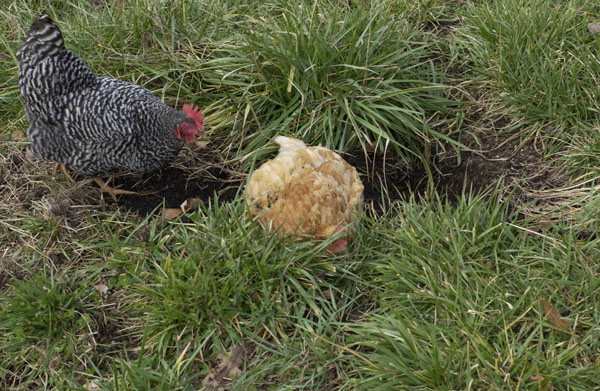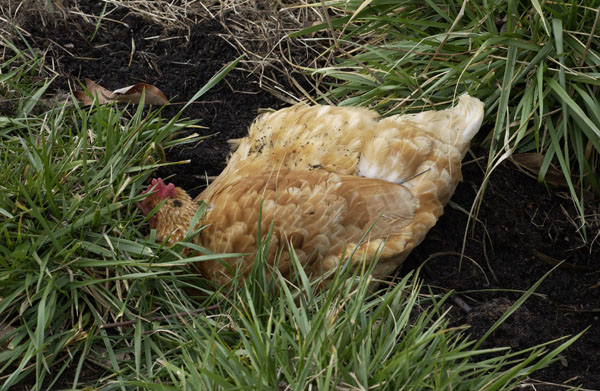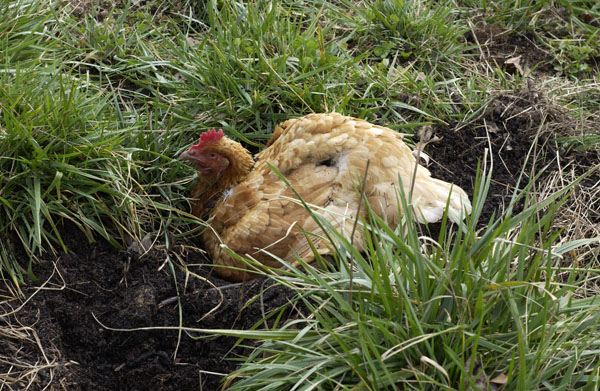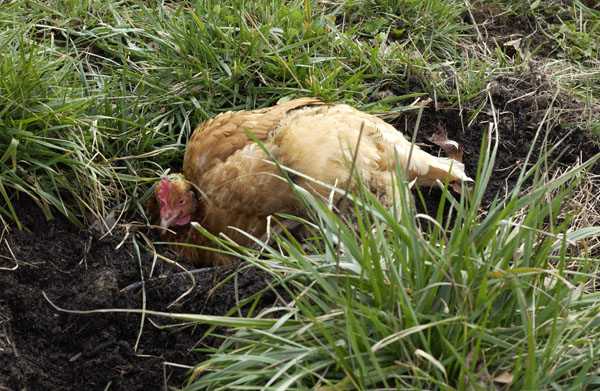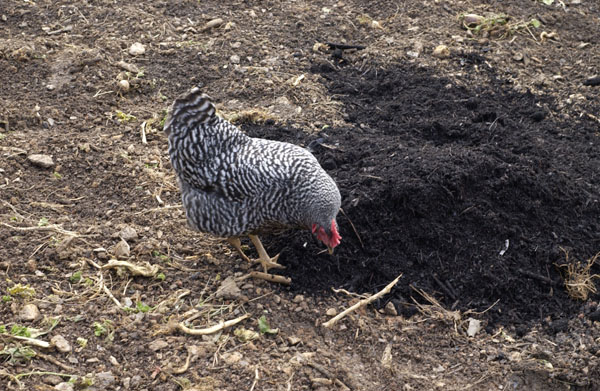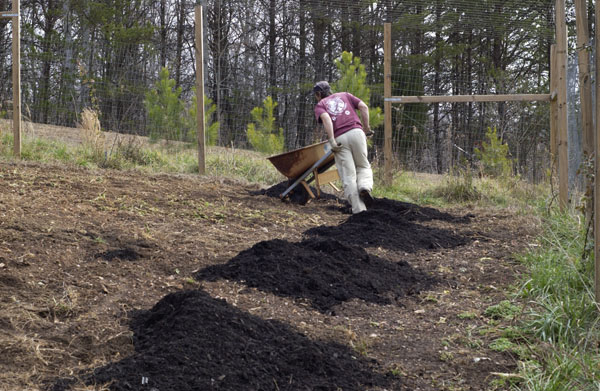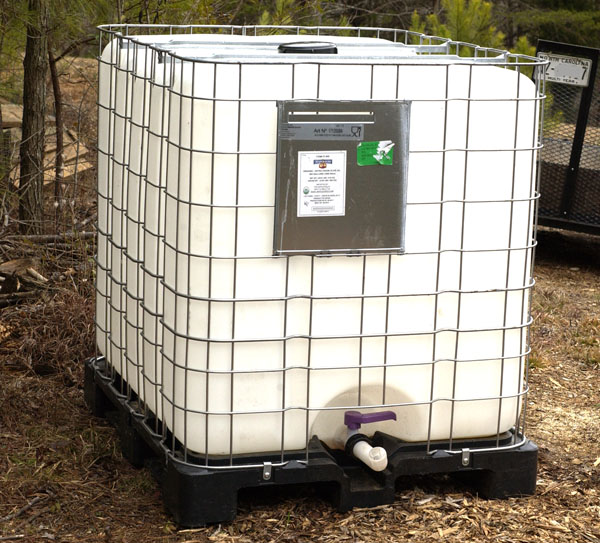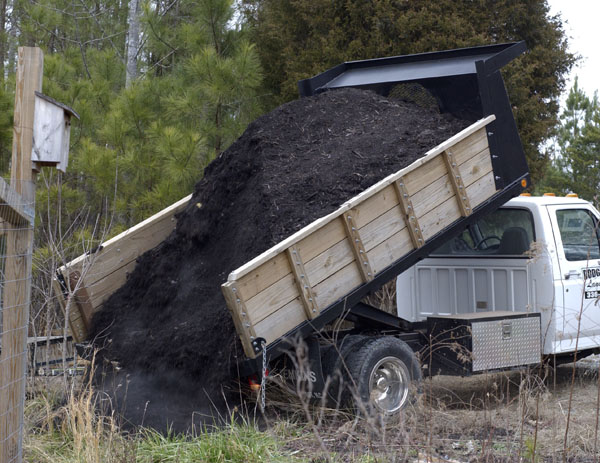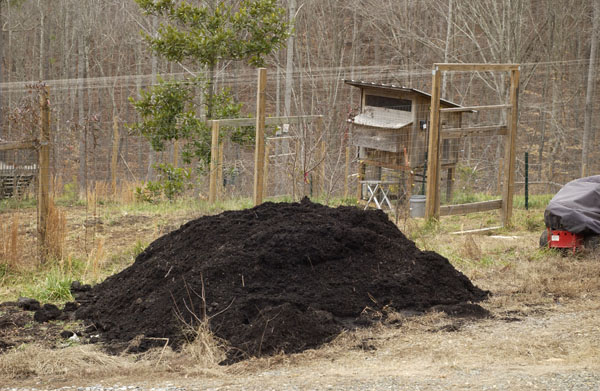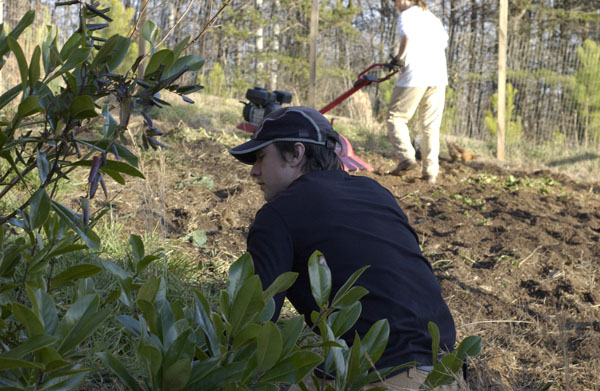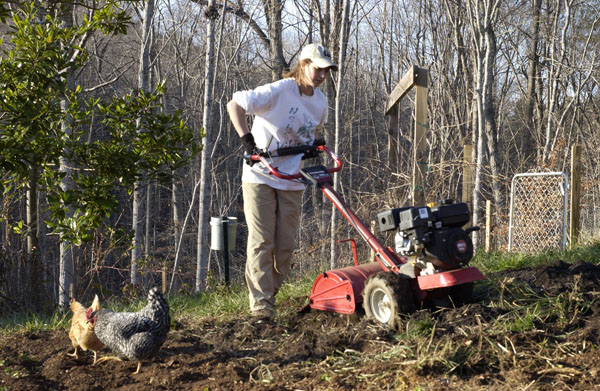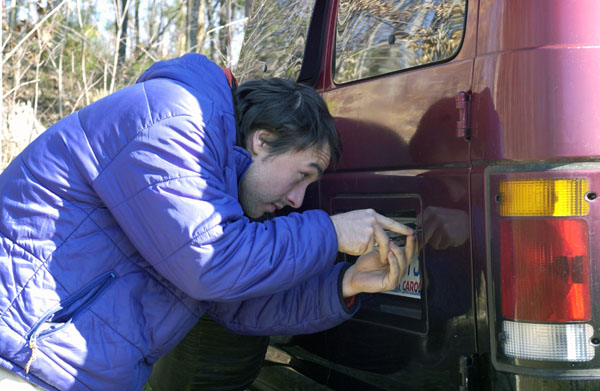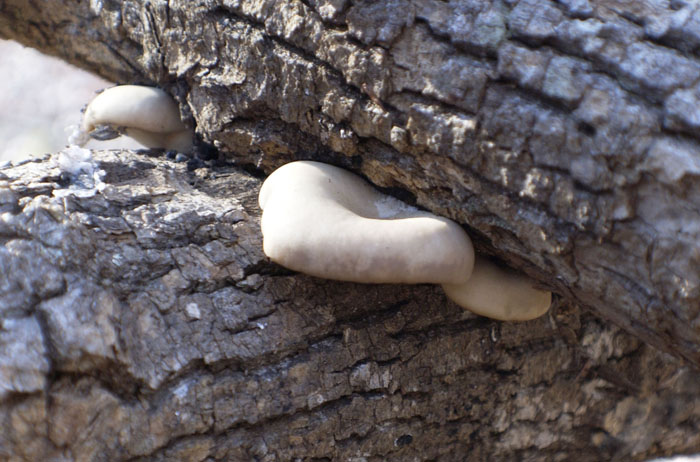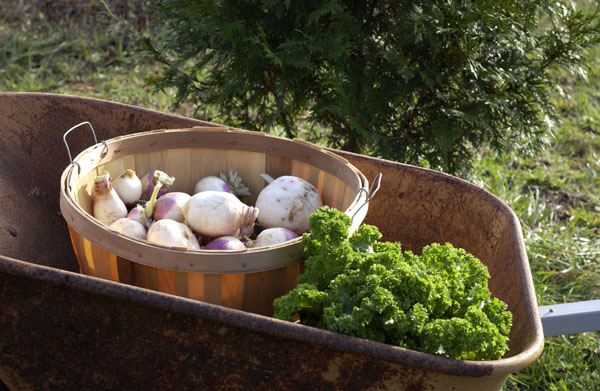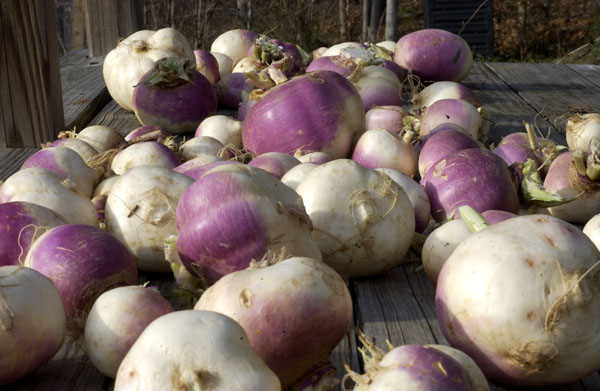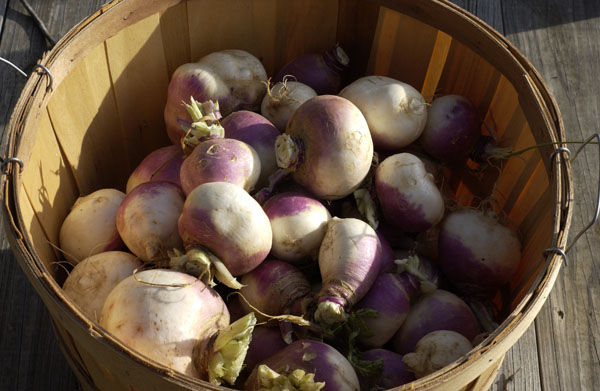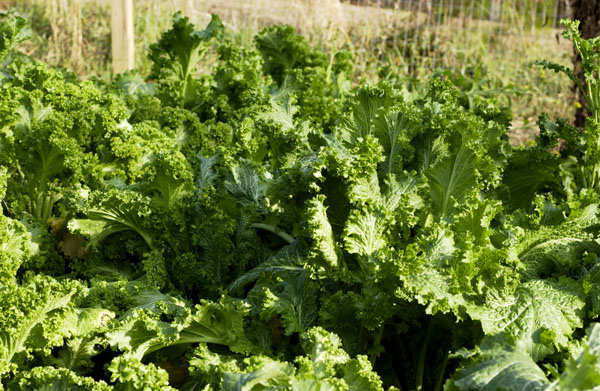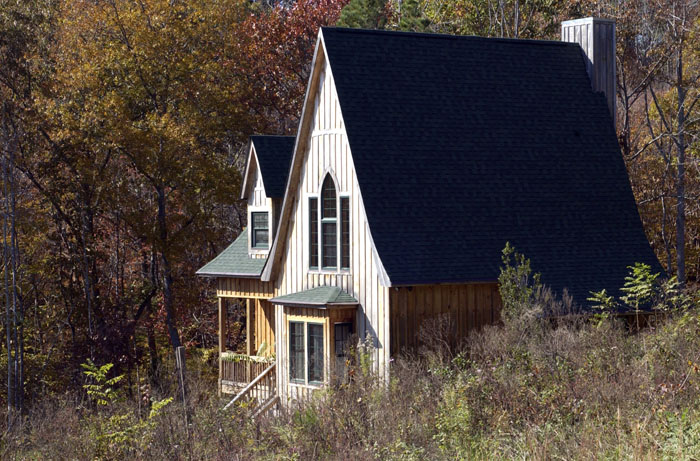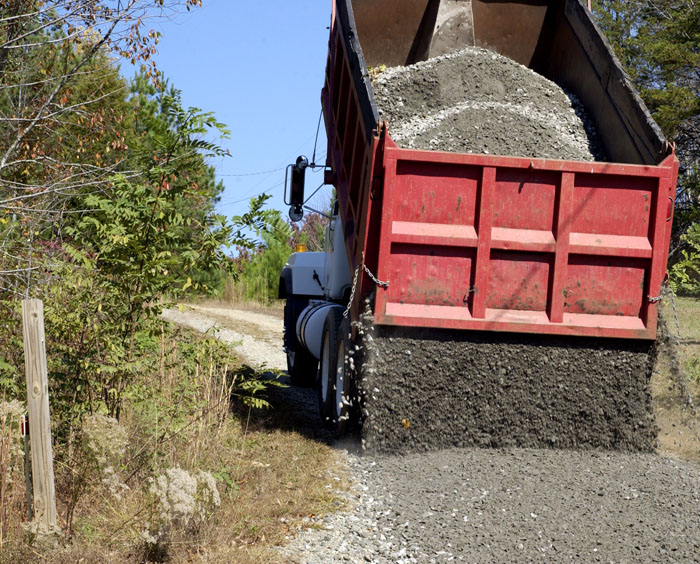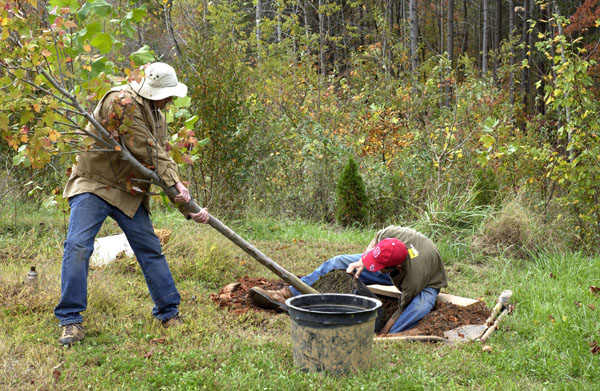If everyone could get to know a chicken, we wouldn’t put up with the brutal way chickens are treated in the industrial agriculture system. Chickens have very distinct personalities. They’re curious, and not as dumb as we sometimes think. And they love life. Here Ruth takes a nice, long, luxurious dirt bath.
Category: The land
Everyone loves compost
Tote tanks
I finally found a tote tank to store water for the garden’s irrigation system. The irrigation system is a work in progress, and I’ll have photos of that when the project is done.
Tote tanks are much less expensive than the water tanks sold by agricultural suppliers. When you buy one, you’re also recycling it. Otherwise, I assume, they’re industrial waste.
Tote tanks are a product of globalization. They’re how high-value fluids are shipped around the world. They’re designed to be easily moved by a fork lift, and no doubt there is some special means of stacking them on container ships. Some — probably most — of the tanks are used for toxic fluids such as industrial lubricants. But some of them are used for food. That’s the trick. It took me months to find a tote tank that I could verify was made of food-grade plastic and that had not contained anything toxic. This particular tank contained organic olive imported from Spain. The man I bought it from didn’t want to tell me the name of the company he buys them from, because he wants to protect his access to these hard-to-find items. But he did say that he gets them from a company that makes products such as salad dressings.
If you’re looking for a tote tank, check for a label. There always should be a label saying what was in the tank. Personally I would not buy a tank if the label has been removed. In the photo below, note the glass-and-fork icon put there by the Spanish manufacturer of the tank. I believe that icon indicates that the tank is made of food-grade plastics.
Around here they sell for $65 to $100, depending on the condition and whether it’s food grade. They hold about 275 gallons, or 1,000 liters.
Compost, compost, compost
I wish I had thought to keep a running total of the amount of compost that has been used at the abbey. Tons, certainly. I buy it by the dump truck load.
This is a leaf compost, made from leaves picked up as a city service in nearby cities. It’s not an ideal compost, because it’s a high-carbon compost. But if you give it plenty of time for the soil to digest it, it works fine. My understanding of the biology is that high-carbon compost requires further digestion by soil bacteria. The bacteria that do this digestion suck up available nitrogen for their cellular protein. When the bacteria have done their work, the cells die, and the nitrogen is released back into the soil. So, when used in a garden, it must be applied out of season so that it can be digested before planting time.
I think of it as food for my earthworms. They too are hungry little animals just like the rest of the wildlife. That’s something I inherited from my mother. She could never bear the sight of a hungry animal. No one at Acorn Abbey is permitted to go hungry, if I can help it, though I must admit that my population of very fat voles tests my tolerance.
Fall garden, R.I.P.
Last week, we had a night when the low temperature was 18F. That froze the remaining greens in the garden. So it was time to turn the garden at last. Ken and his girlfriend Sarah, who is visiting this week, did the work.
It’s a shame that I wasn’t able to plant a cover crop of winter rye, but I couldn’t bring myself to turn under a garden that was still producing mustard and kale. The plan is to make up for it by adding lots of compost to feed the worms.
Speaking of worms, I hope the chickens didn’t eat too many of them. More than anything, they love to scratch in freshly turned soil.
Let the winter projects begin
Ken is back. And he seems to have brought the arctic air with him. He’ll be here for a month or so. The main winter project that he’s going to help me with is the irrigation project. That involves enlarging a spot in the stream to serve as a reservoir, running some pipe up the hill to the garden, and putting in a water storage tank. There’s also a lot of mulching and composting to be done.
Ken’s van was parked here while he was in Alaska and traveling for the past six months. He got the van back on the road today and plans to do some peregrinating and van-dwelling.
As for the weather, the long stretch of unseasonably warm weather has ended for now, with a low of 16F forecast for tonight.
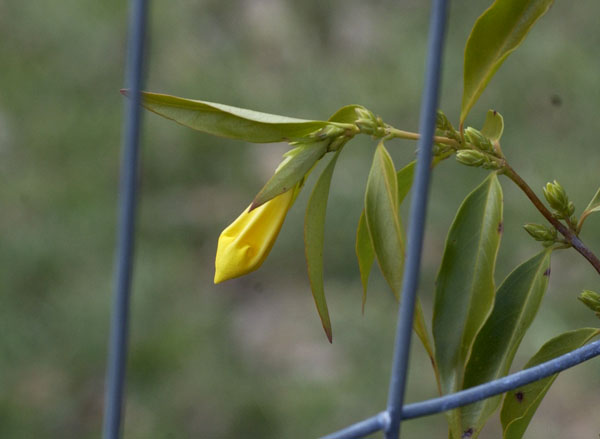
This Carolina jasmine bloom popped out during the warm weather. The cold snap will put an end to that.
First shiitake mushrooms
A few days ago we had yet another round of unseasonably warm weather and rain. That caused my first shiitake mushrooms to pop out. They had frozen by the time I found them, and they won’t be edible, but at least it’s a good sign. I’m hoping it means that I will have a decent mushroom crop in the spring.
It's good I like turnips
I’m sure I’ll never get over the thrill of knowing that supper came home in a wheelbarrow rather than a grocery bag. I harvested the remaining turnips today, because they’d stopped growing, and the risk of a hard freeze is increasing. It seems strange that the garden is still producing turnips, mustard, and kale during the second week of December. I really don’t have a reference for whether this is abnormally late for these crops in this area. Fall gardens are frost-hardy. And if it is unusually late for the garden, then that’s the upside of climate change — a longer growing season.
The soil was nice and wet when I pulled the turnips. Most of the turnips came up with a clump of soil, and in almost every clump of soil was a nice, fat earthworm or two. The organic soil amendments I’ve dumped on the garden are really paying off. I spread the dirty turnips in the grass and hosed them down to wash them, then spread them out to dry in the wind and sun. Now they’re in the basement. There was about three-quarters of a bushel of turnips left from a turnip patch of about 175 square feet. I’ve been eating, and giving away, turnips since October. I’ve prepared them every way I can think of — steamed and sliced, with butter; curried; roasted; creamed in yogurt. One turnip dish that is good enough for company is turnips au gratin.
I don’t know why turnips are almost universally scorned. For the garden, they’re an easy fall staple, and they’ll keep well into the winter. No doubt many a peasant has been kept alive by turnips in hard times. I’ve actually been served turnips once in a fancy restaurant — Alice Waters’ Chez Panisse in Berkeley. As I said to the waiter, it takes confidence to serve turnips.
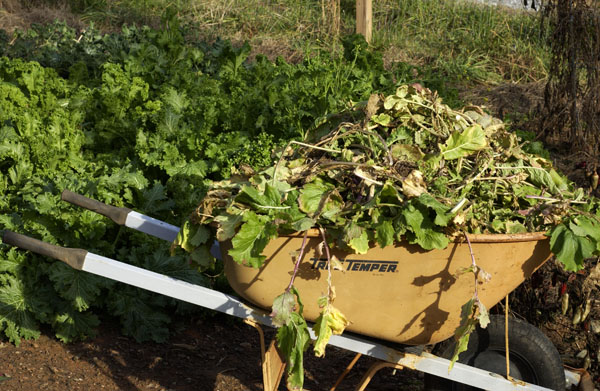
The turnip tops made a wheelbarrow load for the compost.
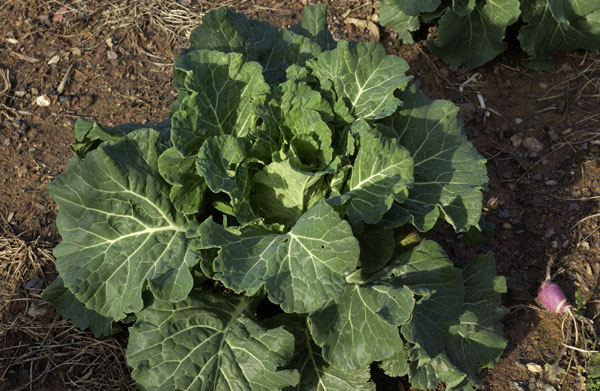
This cabbage is still going, but I doubt that it will have time to make a head before a freeze gets it.
Dry summer = colorless fall
It has not been a particularly pretty or colorful fall. The changing leaves are fairly drab. The grass should be lush and green in the fall, but there was not enough rain to produce the lushness.
This was not the case everywhere. On a recent trip to Asheville via the Blue Ridge Parkway, there were extraordinary fall colors around Linville and Grandfather Mountain. There was more rain in the mountains during the summer and early fall.
Part of the price one pays for greater privacy is the maintenance of the road that connects one to civilization. The road ate up three loads of gravel yesterday. The cost would have been enough to pay for a short visit to California. The cost makes me gripe, but it can’t be helped.
New plantings
I’m very lucky to have a garden shop a few miles away owned by the county’s former agricultural extension agent. I bought some bargain trees from him that were planted yesterday. The trees (though I didn’t know it when I picked them out) were all trade-show trees from Monrovia nurseries that Michael had bought after a trade show two or three years ago. The trees have been in their pots all that time, waiting for the day when the garden shop would open. The trade-show look had worn off, but the trees were beautiful specimens in good condition, pot bound, and eager to be planted. I got them at a bargain price.
Yesterday Michael and his helper planted a number of new things at the abbey: a red maple as a shade tree, a weeping willow, a conical ligustrum, two kiwis, two figs, and two raspberries.

